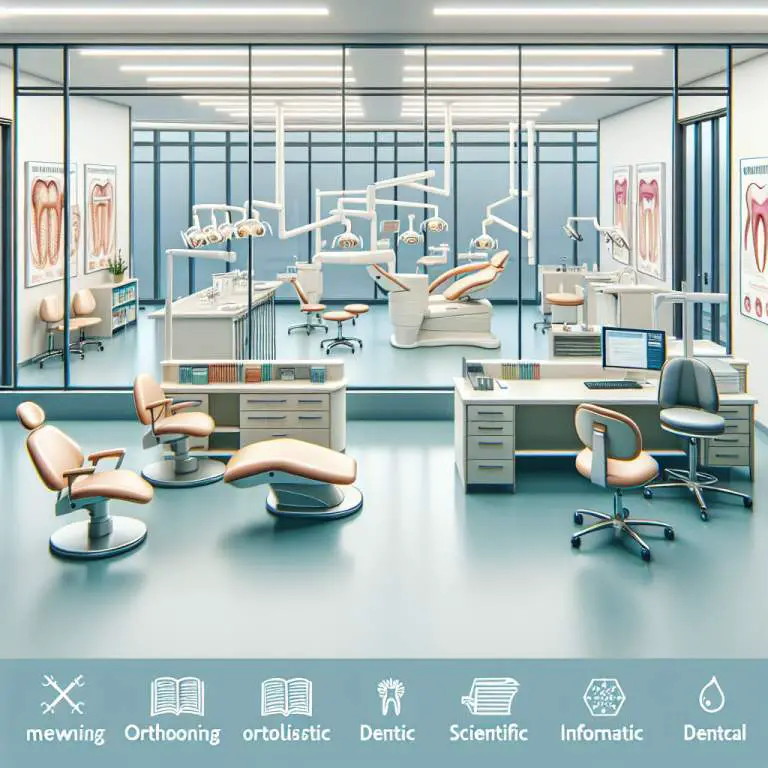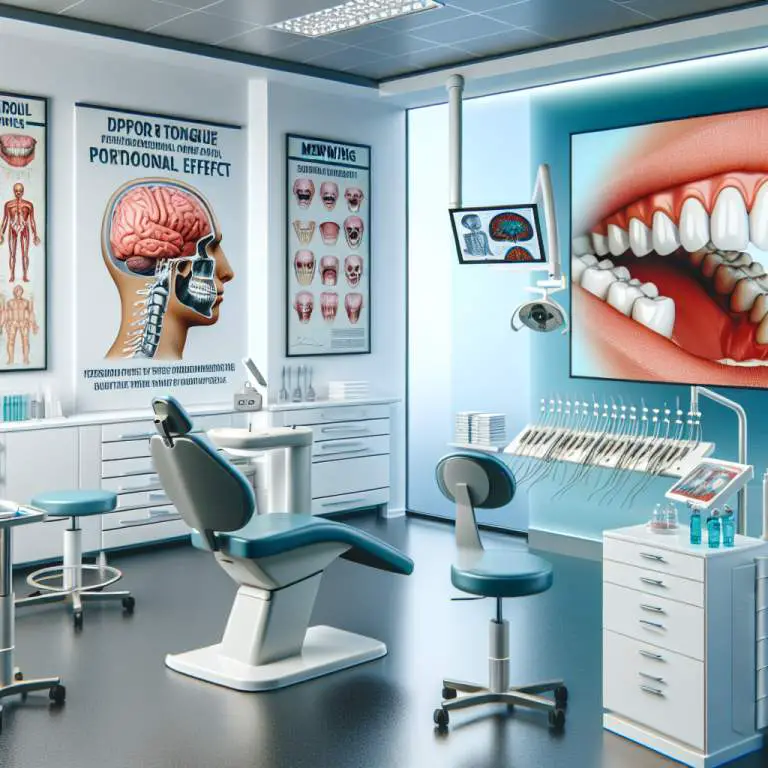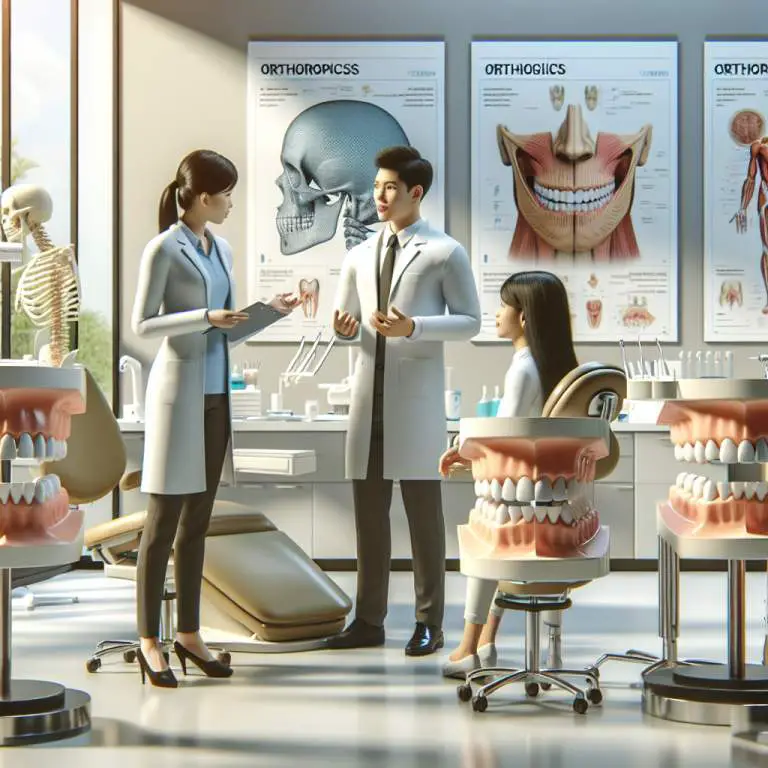How does mewing influence the alignment of teeth scientifically?
Mewing, a technique that involves proper tongue posture, can influence the alignment of teeth by applying gentle pressure on the palate and indirectly affecting tooth positioning. When practiced consistently, mewing may help in pushing the teeth into a better alignment due to the natural adaptation of bone to pressure over time. However, scientific evidence on its effectiveness is limited, and it should not replace traditional orthodontic treatments.

How Does Mewing Work to Potentially Alter Tooth Alignment?
Mewing is a technique that involves placing your tongue against the roof of your mouth. This position is held throughout the day and even during sleep if possible. The idea is that by doing this, you can change the way your face looks and even how your teeth line up.
When you practice mewing, you’re using your tongue to apply gentle pressure on the roof of your mouth. Over time, this pressure might help in reshaping the jawline and could lead to changes in tooth alignment. It’s like telling your mouth and teeth how you want them to grow or stay in place without using braces.
What Scientific Principles Support the Effectiveness of Mewing on Dental Structure?
The science behind mewing relates to how bones can change shape when pressure is applied over time. This concept is known as bone remodeling. Our jaws are made of bone, so the theory suggests that applying constant pressure with the tongue can encourage the bones to grow differently.
Another principle at play is called orthotropics, which focuses on guiding facial growth naturally through posture and function rather than mechanical devices like braces. By improving tongue posture through mewing, proponents believe it can influence dental structure positively by encouraging better alignment of teeth and jaws.
Can Mewing Correct Teeth Misalignment Without Orthodontic Intervention?
Mewing has been discussed as a potential way to address minor teeth misalignment without needing braces or other orthodontic treatments. Some people who have tried mewing report improvements in their dental alignment over time. However, these changes are often subtle and take a long time to become noticeable.
It’s important to remember that while mewing might help with slight adjustments, it’s not likely to correct significant dental issues or misalignments that usually require professional orthodontic intervention. For major corrections, traditional methods like braces or clear aligners are still necessary.
What Are the Limitations of Mewing in Terms of Correcting Dental Issues?
Mewing has its limitations when it comes to correcting dental issues. One major limitation is that it may not be effective for everyone. Factors such as age, genetics, and the severity of dental misalignment play a crucial role in determining whether mewing can make a noticeable difference.
Additionally, there’s limited scientific research supporting mewing as a reliable method for correcting dental problems. Most evidence comes from personal testimonials rather than controlled studies. Therefore, while some individuals might see benefits from practicing mewing, it should not be considered a substitute for professional orthodontic advice or treatment.
| Aspect | Description | Scientific Rationale |
|---|---|---|
| Tongue Posture | Mewing involves correct tongue posture, pressing the entire tongue against the roof of the mouth. | Constant pressure can potentially influence maxillary expansion, indirectly affecting tooth alignment by providing more space for teeth to align properly. |
| Jaw Positioning | Mewing encourages proper jaw alignment with the upper and lower teeth fitting together snugly. | Proper jaw positioning may reduce malocclusion, which is a misalignment issue where the teeth do not fit correctly between the upper and lower dental arches. |
| Breathing Pattern | Promotes nasal breathing over mouth breathing. | Nasal breathing supports proper oral posture and may contribute to better overall dental alignment by preventing the facial structure changes associated with chronic mouth breathing. |
| Facial Muscle Tone | Mewing exercises aim to strengthen the muscles of the face and neck. | Improved muscle tone can support better structural integrity of facial bones and tissues, potentially influencing dental alignment through indirect support of proper oral posture. |
How Long Does It Take to See Results from Mewing on Tooth Alignment?
Seeing results from mewing can vary greatly from person to person. Some individuals report noticing changes in a few months, while others may not see significant improvements for a year or more. The process is slow and requires consistent effort.
The time it takes to observe changes also depends on the age of the individual and their commitment to maintaining proper tongue posture. Younger people might see results faster due to their still-developing facial structures. Patience and persistence are key when practicing mewing for dental correction.
Are There Any Risks or Side Effects Associated with Mewing for Dental Correction?
Mewing, when done correctly, is generally considered safe. However, incorrect technique can lead to potential risks or side effects. For instance, applying too much pressure with the tongue against the teeth can cause dental issues or exacerbate existing ones.
Additionally, some people might experience jaw pain or discomfort if they overdo it or if they’re not performing the technique properly. It’s important to research and possibly consult with a professional before starting mewing exercises to ensure they are done safely.
How Can One Ensure They Are Performing Mewing Correctly for Maximum Benefit?
To ensure that mewing is performed correctly, one should start by learning the proper tongue posture. The entire tongue should be pressed against the roof of the mouth, not just the tip. Breathing through the nose rather than the mouth is also crucial for effective mewing.
Videos and tutorials from reputable sources can be helpful in understanding the correct technique. Additionally, consulting with an orthodontist or a myofunctional therapist who is familiar with mewing can provide personalized guidance and help avoid common mistakes.
Final Thoughts
Mewing has gained popularity as a method for potentially improving tooth alignment and facial structure without invasive procedures. While some individuals report positive changes, it’s important to approach this practice with realistic expectations and patience.
Risks associated with incorrect technique highlight the importance of educating oneself properly before attempting mewing. With consistent effort and proper execution, mewing may offer benefits beyond cosmetic improvement, including better breathing patterns and overall oral health.







